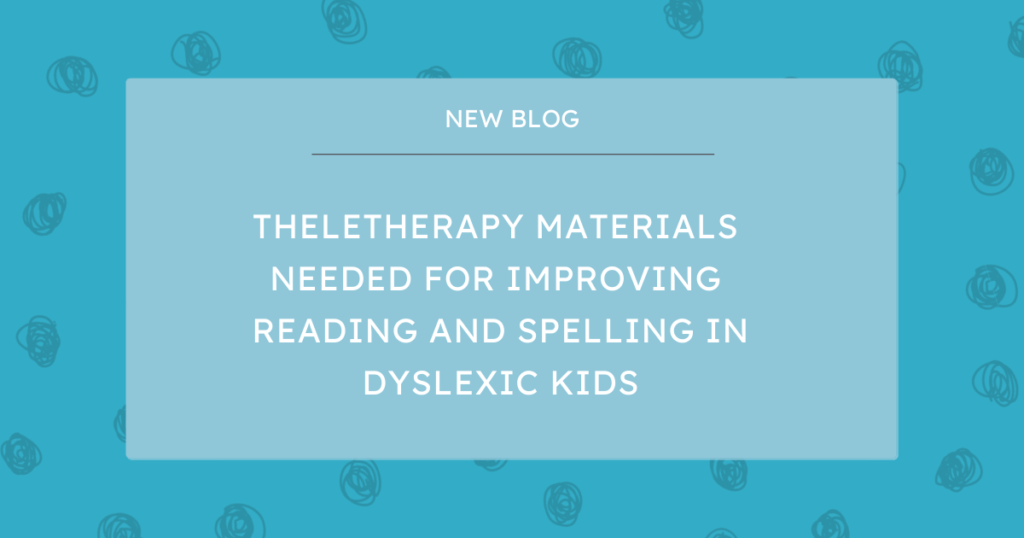As an Amazon Associate, I earn from qualifying purchases.
Teletherapy has become an increasingly popular option for delivering speech-language pathology services, especially for children with dyslexia who need targeted support to enhance their reading and spelling abilities. In this blog post, we will explore the essential materials needed to conduct successful telehealth sessions and provide valuable resources for parents and caregivers. Let’s dive in!
How Do Telehealth Sessions Work?
Telehealth sessions for speech-language pathology involve using digital platforms to facilitate remote communication between the speech-language pathologist, the child, and their family. These sessions can take place in the comfort of the child’s home, eliminating the need for physical travel to therapy centers.
During a teletherapy session, the speech-language pathologist interacts with the child through video conferencing software. They engage in various activities and exercises tailored to improve the child’s reading and spelling skills. The therapist guides the child through the session, provides feedback, and assigns relevant exercises to practice between sessions.
Essential Materials for Teletherapy Sessions
To ensure a successful teletherapy session focused on improving reading and spelling skills for children with dyslexia, certain materials are essential. Here are the must-have items:
- Choice 1: Fine Tip Dry Erase Markers with Handwriting Lines – This set includes fine tip dry erase markers and a dry erase board with handwriting lines. The fine tip markers are ideal for writing on the board, and the handwriting lines provide a structured surface for practicing letter formation, spelling, and word work.
OR
- Choice 2: Ultra Fine Tip Dry Erase Markers with College Rule Lines – This set includes ultra fine tip dry erase markers and a dry erase board with college rule lines. The ultra fine tip markers are perfect for precise writing, and the college rule lines offer more space for older children to write longer sentences or paragraphs.
In addition to the chosen set, the following materials are also essential:
- 1.5 inch binder (link): A sturdy binder helps keep therapy materials organized and easily accessible. It can hold worksheets, activity sheets, and any other relevant documents.
- Hue document camera (link): A document camera allows clear and close-up sharing of physical materials during the teletherapy session. It provides a real-time view of books, flashcards, or other visual aids, enhancing engagement and interaction.
- Dry erase markers (link): Fine-tip dry erase markers are essential for writing on a whiteboard or a suitable dry erase surface. They allow the therapist and child to collaborate, practice spelling, and complete various language exercises.
- Whiteboard or suitable dry erase surface: A whiteboard is a versatile tool for teletherapy sessions, providing a surface for writing, practicing spelling, and visualizing language concepts.
- Paper and pencils: Traditional paper and pencils are still valuable resources. They allow the child to complete written exercises, practice spelling, and engage in various language-based activities.
Optional Materials for Enhanced Teletherapy Experience
While the essential materials mentioned above are crucial for teletherapy sessions, a few optional items can enhance the overall experience. Consider the following:
- 3-ring pencil pouch (link): A pencil pouch helps keep pencils, erasers, and other small items organized within the binder. It ensures that materials are readily available when needed.
- Plastic sheet protectors (link): Sheet protectors are useful for safeguarding important worksheets or activity sheets. They allow for repeated use without damaging the original documents.
- Headset with microphone (link): A headset with a microphone can provide clearer audio during teletherapy sessions. It helps minimize background noise and ensures that both the therapist and child can hear each other clearly, enhancing communication and engagement.
These optional materials can contribute to a more streamlined and organized teletherapy experience, making it easier for the child to focus on their reading and spelling exercises.
Remember, the choice of materials may vary based on the specific needs and preferences of the child and therapist. It’s always a good idea to consult with the speech-language pathologist to determine the most suitable materials for the teletherapy sessions.
As an Amazon Associate, I earn from qualifying purchases.
In conclusion, teletherapy offers a convenient and effective way to support children with dyslexia in improving their reading and spelling skills. By having the essential materials, such as a chosen set of dry erase markers and boards, a binder, document camera, dry erase markers, a whiteboard, and basic stationery, along with optional items like a pencil pouch, sheet protectors, and a headset with a microphone, you can create a conducive learning environment at home.
Remember, the goal of teletherapy is to provide targeted support and engage children with dyslexia in meaningful activities that promote their language development. With the right materials and the guidance of a qualified speech-language pathologist, your child can make significant progress in their reading and spelling abilities.
If you’re ready to get started with teletherapy, make sure to have these materials on hand. Wishing you and your child a successful teletherapy journey!
Disclaimer: The product links provided are affiliate links. As an Amazon Associate, I earn from qualifying purchases. This means that if you make a purchase through these links, I may earn a small commission at no additional cost to you. Your support helps me continue to provide valuable content to assist you in your journey.
Note: The information provided in this blog post is for educational purposes only and should not replace professional advice. Please consult a qualified speech-language pathologist for personalized recommendations based on your child’s specific needs.



